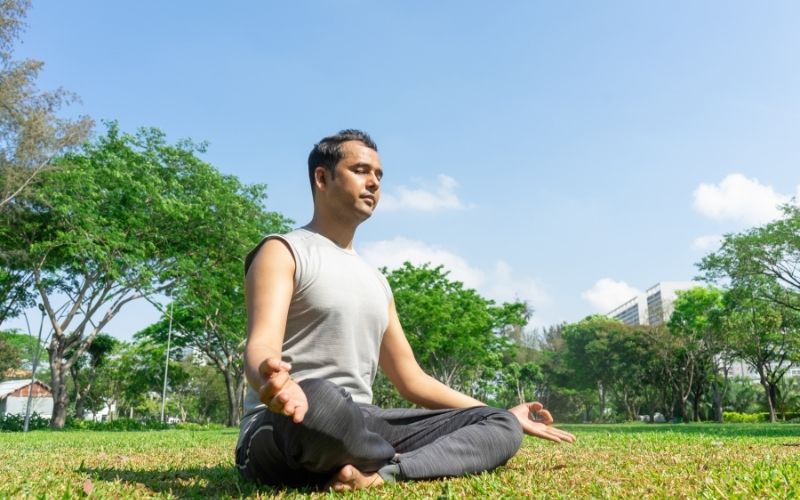There are several positions you can get into to enjoy the benefits of mediation, with sitting cross-legged being the most popular one. The full lotus pose isn’t an easy position to get into, but it is the most recognizable one for meditation.
Buddha is often represented sitting cross-legged in deep meditation. This stance has become synonymous with enlightenment, but there are over one hundred Buddha poses, and each one looks a little different and serves a different purpose.
To get into full lotus pose, sit on your buttock and place each foot on the opposite thigh, then bring your hands to your knees, with your palms facing up. Getting both of your legs up to sit on your thighs may be uncomfortable at first, so don’t be concerned if you’re unable to get into the pose the first time around. Meditation is about patience, and working on this pose is a great way to work on that virtue.
Meditators sit cross-legged to stay comfortable and in-tune with their body during prolonged periods of mediation.
Table of Contents
Key Posture Points for Mediation
According to mediation advisor Lodro Rinzler, there are seven points as to why sitting meditation posture is so important. These should all be taken into account when getting into.
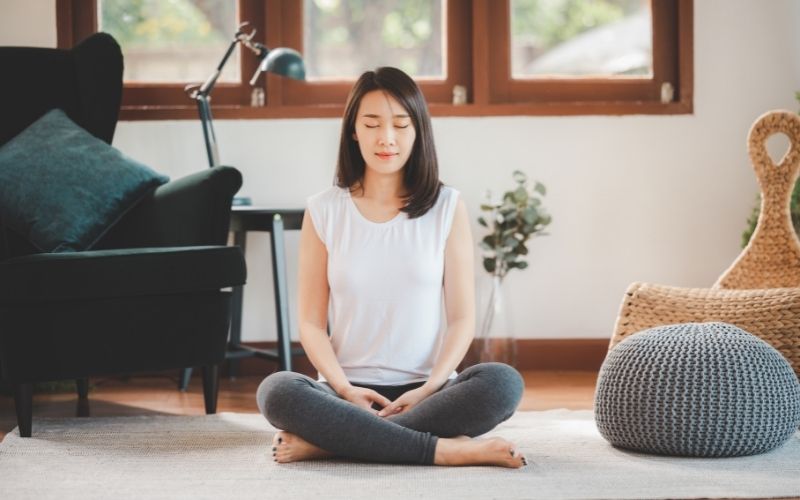
- Being Seated: It’s important to be sitting down while meditating. This doesn’t mean you need to get into a full lotus pose; even just sitting in a chair with your feet firmly planted into the ground is a great way to get started. While you can lay down for a mediation session, you risk falling asleep, which defeats the purpose of spending conscious time in silence.
- Elongating the Spine: Keeping your spine long and stacked is essential during mediation. Meditators should be tall and supported.
- Rested Hands: The hands should be rested in the lap, on the knees, or even on top of one another with the thumbs gently pressed together in the lap near the belly button. The positioning of your hands will encourage positive and relaxed energy flow in the body while in the cross-legged position.
- Relaxed Shoulders: The shoulders should be back but relaxed and comfortable.
- Tucked-in Chin: Keep your chin tucked in to ensure you’re comfortable for the duration of the session.
- Relaxed Jaw: A tight and completely closed jaw will add tension to your face. While your jaw doesn’t need to be completely open, it should be gently ajar.
- Relaxed Gaze: Try not to focus on any specific element in the room. You can also opt to keep your eyes closed, although you may risk falling asleep like lying down.
Benefits of Sitting Cross-Legged
Sitting cross-legged while meditating relieves your body of any aches and pains you might otherwise experience when sitting down for long periods. Pain in the waist will subside, your kidneys will become energized, and your general posture will improve.
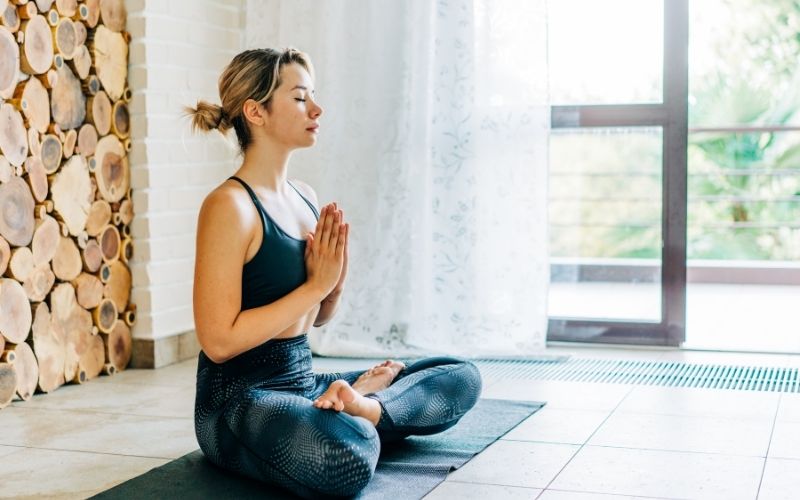
The lotus position (even if it’s not the full lotus position), can also improve your meditation sessions. When you exclusively sit in the lotus pose to meditate, your body will begin to associate the position with feelings of peace and serenity, putting your head in the mind space to meditate.
There are also several physical benefits to sitting cross-legged. It improves your range of motion, which means you don’t feel as stuck in one position as you would in other poses.
You may have heard that sitting with your legs crossed is bad for blood circulation, which is true if you’re sitting in a chair. However, when sitting on the floor in the lotus pose, your blood circulation is improved.
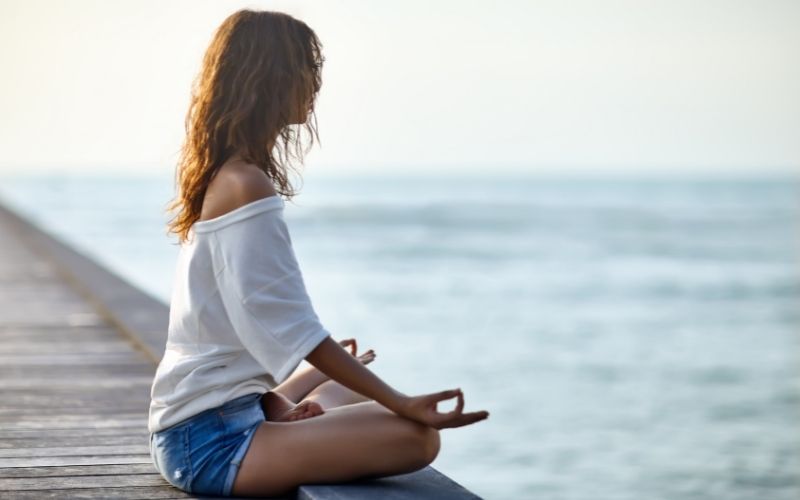
According to Times of India, “When you sit cross-legged, your ankles put more pressure on the arteries of your inner thighs. This makes your heart pump more blood, leading to a better blood supply to all parts of the body.”
Sitting cross-legged also stretches your legs and muscles and is good for your knees and joints. Therefore, you aren’t just helping your mind when you meditate in the lotus pose, you’re also giving your body a little bit of love.
Having issues with digestion? Your posture may be part of the problem. Sitting cross-legged with your spine stacked is a great opportunity to give your digestive organs the attention they need to do their job.
Finally, sitting cross-legged is also very comfortable, and the position will also allow you to focus on finding your inner peace and forgetting about your troubles while you meditate.
Lotus Pose Variations
If you can’t get into a full lotus pose right now, don’t worry. There are plenty of lotus pose variations to try out that all offer the comfort and support you need during a mediation session.
1. Easy Pose
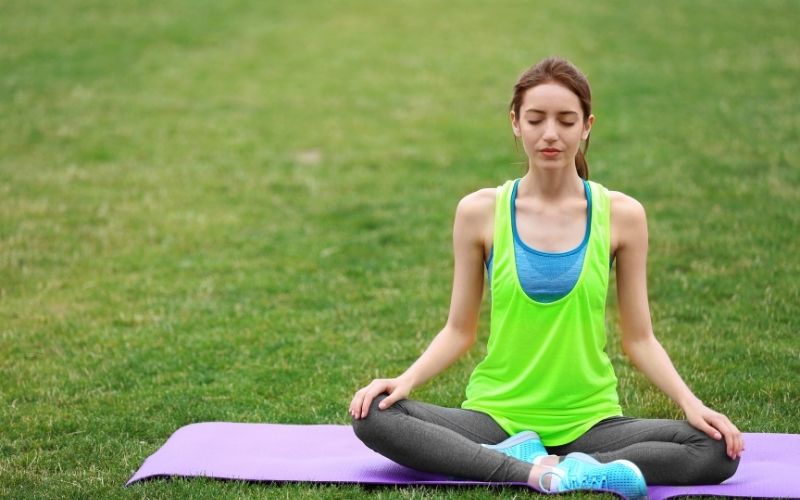
This pose is great for beginners or even intermediate meditators looking for a simple and comfortable position. Cross your legs with your feet placed under your thighs. Your sit bones should be rooted into the ground and your palms placed comfortably on your knees.
2. Half Lotus Pose
This is a great transitional pose when working towards a full lotus pose. In a half lotus pose, only one foot is placed on top of the opposite thigh; the other rests comfortably on the ground like in the easy pose. Your palms should be facing up.
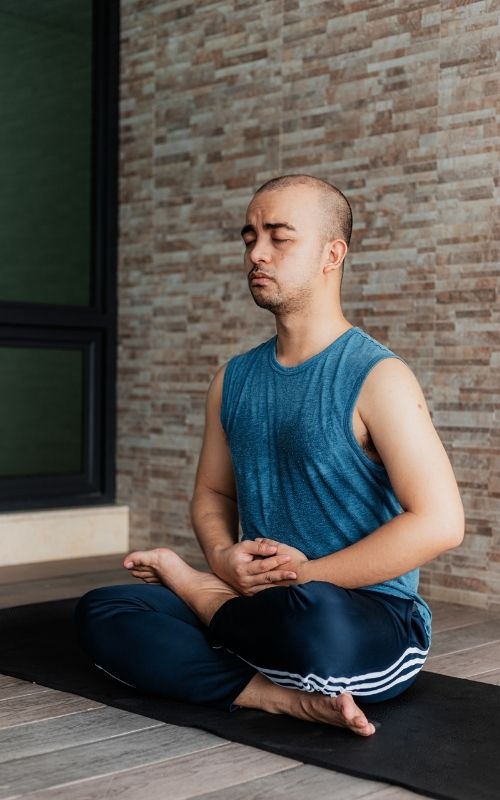
The most important thing to remember in the half lotus pose is that you should switch after several breaths or halfway through to allow both to enjoy the position and stretch.
3. Butterfly Pose
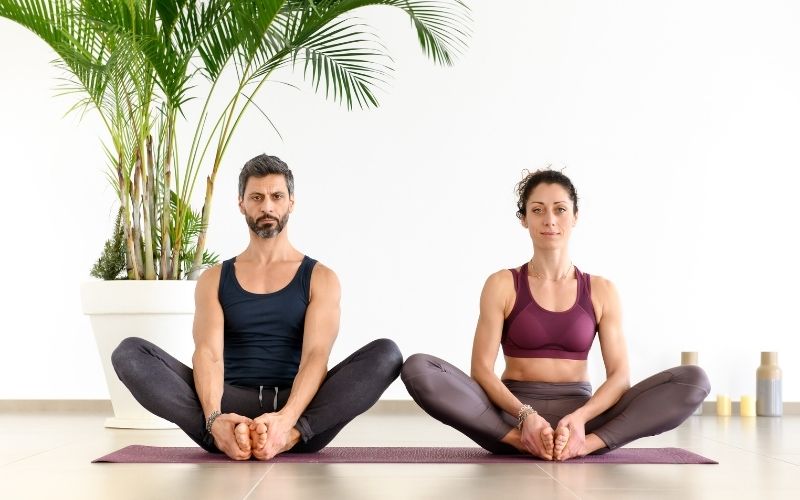
If you’re having difficulty crossing your legs but still want to enjoy meditation sitting on the ground, the butterfly pose might be a good option for you. Sit on the floor on your sit bones; you may opt to sit on a pillow if that’s more comfortable for you.
Bring your feet together and press their soles gently together. Rest your hands on your knees or comfortably in your lap.
Tips for Sitting Cross-Legged During Meditation
Meditation can be difficult, regardless of what position you chose to do it in. Here are a few tips to make sitting cross-legged during your sessions easier.
1. Focus on Your Breath
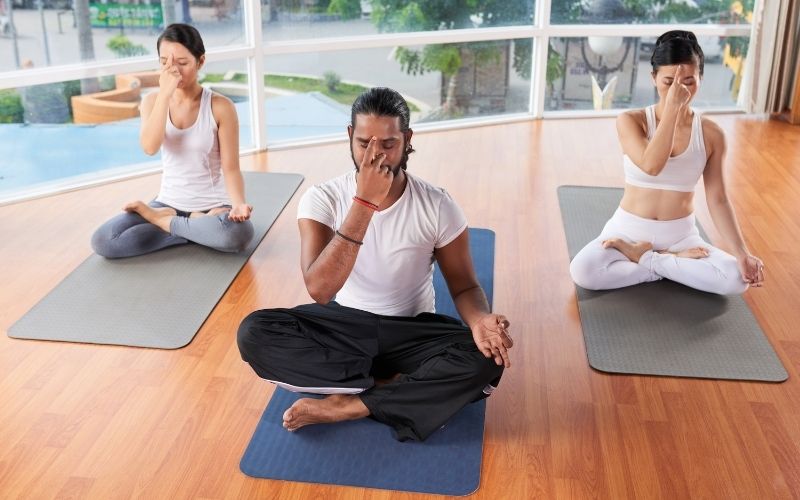
If you over-indulge in thoughts about how comfortable your seated position is, you’re bound to end up wriggling around. Your breath should always be your main focus during meditation.
Focus on taking deep breaths in and out, and let the rest of the world fade into the background.
2. Don’t Push Yourself Too Much
Traditional exercises reward pushing your body to its absolute limits with their “No Pain, No Gain” mentality. Meditation involves a different approach that celebrates being kind to your body, not punishing it.
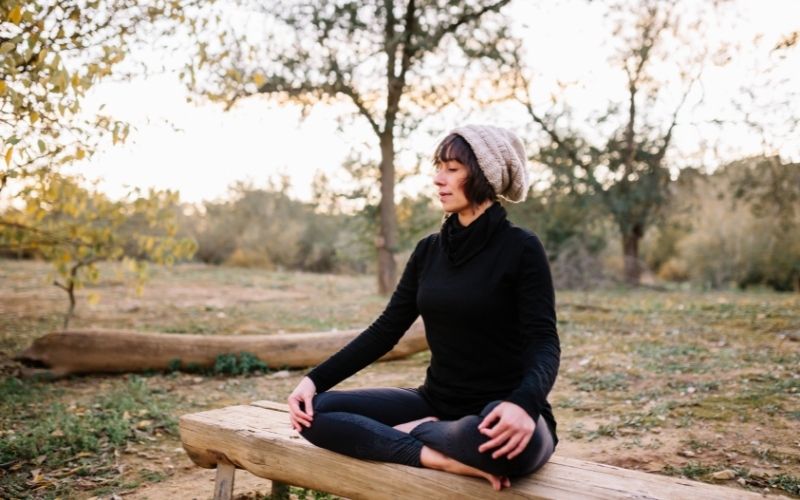
Listen to your body throughout the mediation. If your hips are telling you they need to be adjusted, don’t be afraid to shift one way or another to get into a more comfortable seated position.
This may sound contradictory to the previous tip about focusing on your breath, but we believe you can find a balance between listening to your body and shifting most of your attention towards your breathwork.
3. See How Long You Can Go
The first time you meditate, you may only stay focused for a couple of minutes. That’s an achievement in itself, and you should be proud of any time you spend focused on your inner-wellness.
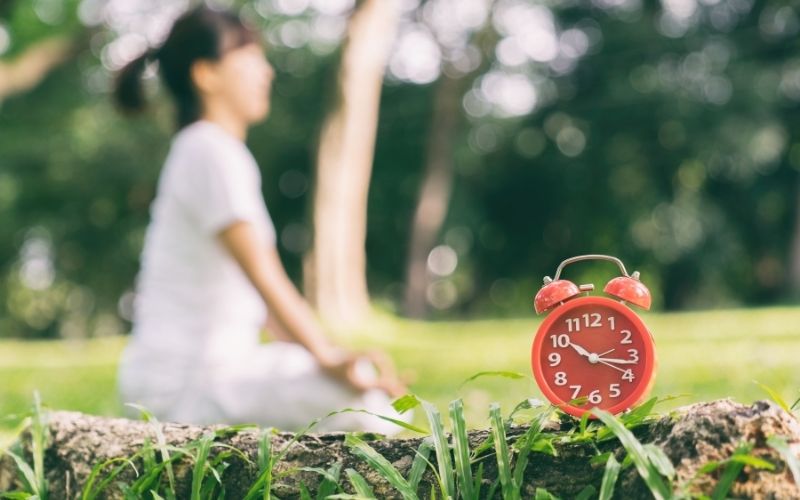
However, as you progress in your practice, try to sit for an extra minute or two each time. This will help you get more comfortable staying still and sitting longer. The more comfortable you are, the easier it will be to enjoy your meditation session and reap the benefits of this traditional technique.
In Conclusion
Meditators sit cross-legged because it’s comfortable, healthy, and keeps them alert enough to meditate properly. There are various ways to sit cross-legged while meditating with the full lotus pose being the most popular position.
If you cannot sit in the full lotus pose, there are several easier options to try out first. Mediation isn’t a competition, or about being the best, it’s about doing what’s best for you and your mind.
Don’t be afraid to introduce a pillow into your routine to make things more comfortable for you.
What’s your favorite position to meditate in? Do you like meditating in the full lotus position, or do you normally go for an alternative seated position? We’d love to hear your thoughts and experiences!

My name is Vance, and I am the owner of To Ergonomics. Our mission is to improve your workflow by helping you create a supportive and welcoming environment. We hope that you’ll find what you’re looking for while you’re here.

